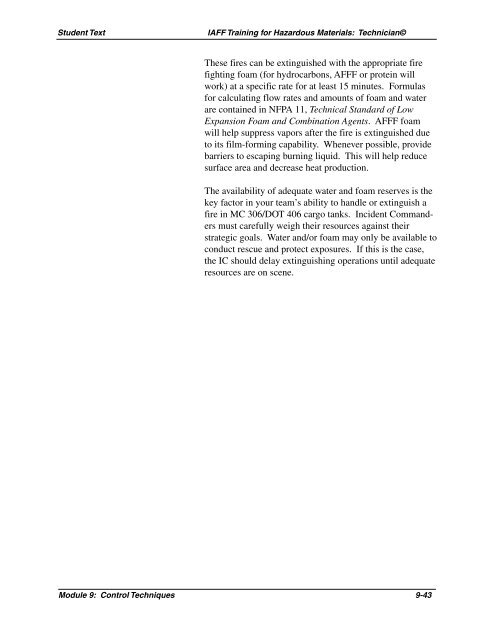Module 9: Control Techniques - International Association of Fire ...
Module 9: Control Techniques - International Association of Fire ...
Module 9: Control Techniques - International Association of Fire ...
Create successful ePaper yourself
Turn your PDF publications into a flip-book with our unique Google optimized e-Paper software.
Student Text IAFF Training for Hazardous Materials: Technician©<br />
These fires can be extinguished with the appropriate fire<br />
fighting foam (for hydrocarbons, AFFF or protein will<br />
work) at a specific rate for at least 15 minutes. Formulas<br />
for calculating flow rates and amounts <strong>of</strong> foam and water<br />
are contained in NFPA 11, Technical Standard <strong>of</strong> Low<br />
Expansion Foam and Combination Agents. AFFF foam<br />
will help suppress vapors after the fire is extinguished due<br />
to its film-forming capability. Whenever possible, provide<br />
barriers to escaping burning liquid. This will help reduce<br />
surface area and decrease heat production.<br />
The availability <strong>of</strong> adequate water and foam reserves is the<br />
key factor in your team’s ability to handle or extinguish a<br />
fire in MC 306/DOT 406 cargo tanks. Incident Commanders<br />
must carefully weigh their resources against their<br />
strategic goals. Water and/or foam may only be available to<br />
conduct rescue and protect exposures. If this is the case,<br />
the IC should delay extinguishing operations until adequate<br />
resources are on scene.<br />
<strong>Module</strong> 9: <strong>Control</strong> <strong>Techniques</strong> 9-43
















